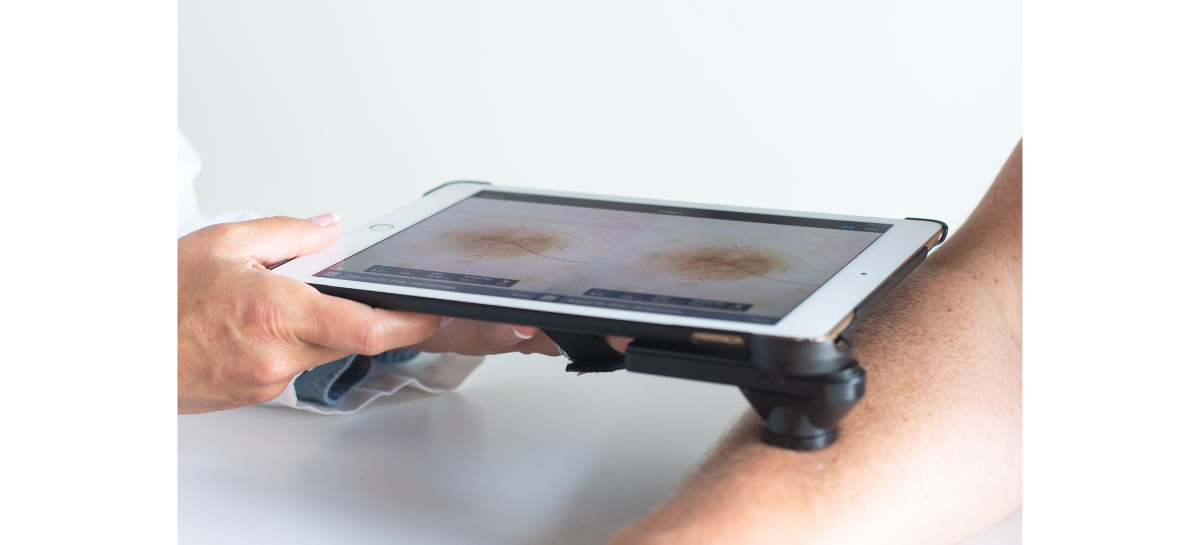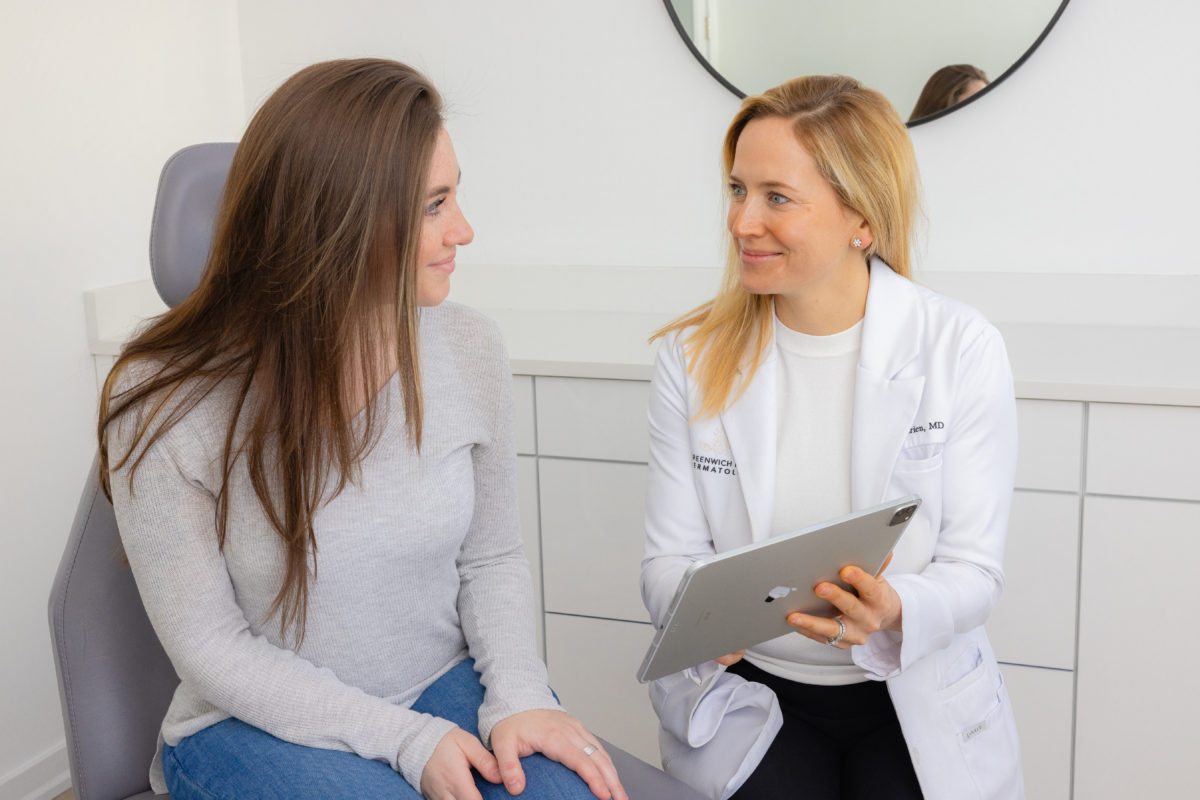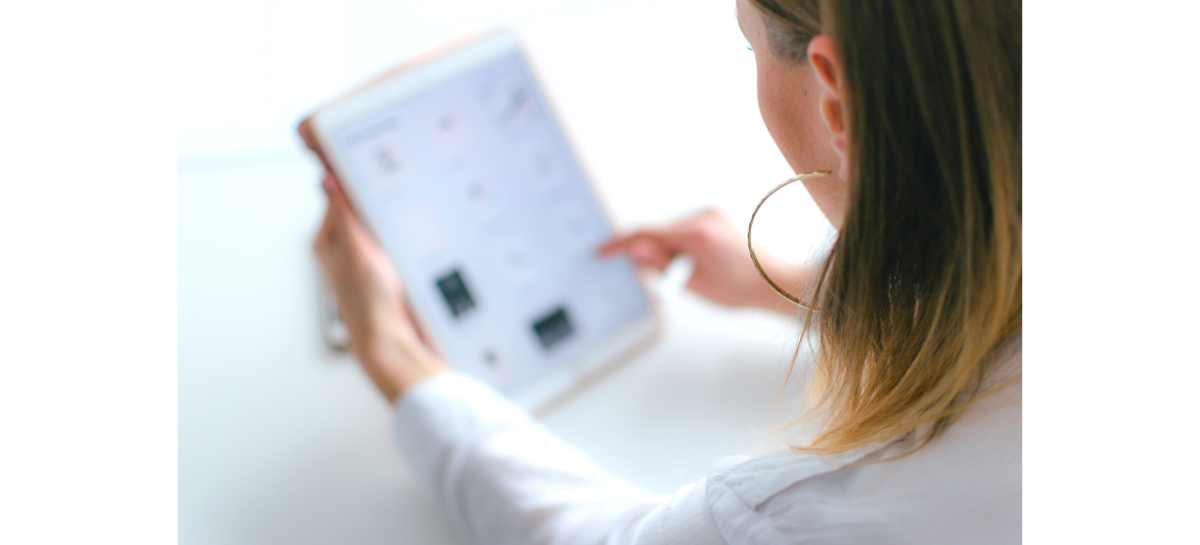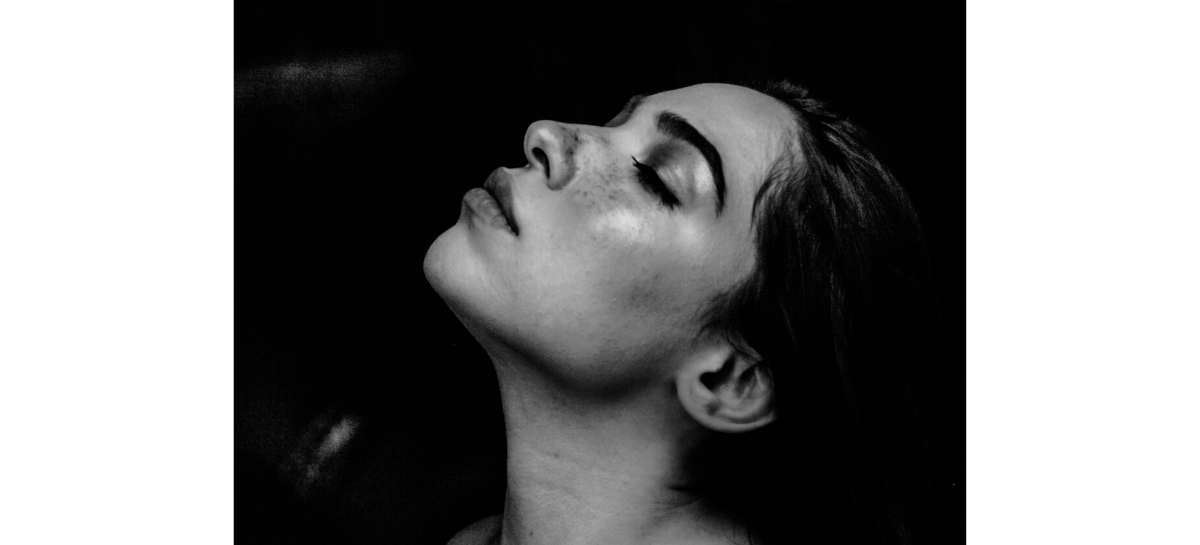Skin cancer is the most common form of cancer. As dermatologists, a significant portion of our training is dedicated to learning how to correctly identify suspicious lesions and biopsy them if necessary. Skin cancers generally present in two forms:
- New spots on the skin
- Changes to existing moles
According to the Skin Cancer Foundation, 70-80% of melanomas, the deadliest form of skin cancer, appear as new spots on the skin. The other 20-30% arise from changes to existing moles. Therefore, being able to accurately monitor changes in the skin with tools like total body photography is essential to diagnosing skin cancer early and saving lives.
Artificial Intelligence Meets Mole-Mapping
Previously, dermatologists had no way of accurately monitoring the exact change in suspicious lesions over time. We relied on patients’ recollection or unreliable office photography. But the total body photography and mole-mapping by SkinIO has changed that. This app-based technology uses artificial intelligence to photograph and monitor pre-cancers with much more accuracy. Plus, it gives patients access to these photos, allowing them to track changes more confidently. Having a smart digital skin health record with photos and dermoscopic images is a game-changer for early skin cancer detection.
Yes, You Still Need that Skin Cancer Screening
Total body photography does not replace your annual skin cancer screening with your dermatologist or physician assistant. Rather, it supplements a screening by creating a visual record. It captures changes between appointments that are not easily observed from appointments six months to one year apart. During your screening, we’ll indicate suspicious lesions to capture close-up and dermoscopically for monitoring.
Who Should Get Full Body Photography
We think it’s a pretty amazing tool that anyone can benefit from. Being able to have a baseline record of your skin capturing places you can’t easily see or monitor, is priceless for giving peace of mind. It’s especially beneficial for those who have:
- been diagnosed with skin cancer before
- a family history of skin cancer
- a history of multiple sunburns
- a higher occurrence of moles or freckles
- a tendency to be proactive about their skin health
Total Body Photography Fast Facts:
How long is a session?
About 10 minutes, usually after an annual skin cancer screening
How many photos are taken?
13 photos capture the total body at different angles. We can add more if there are some areas of more concern. We also capture close-ups and dermoscopic images of lesions that are new, irregularly shaped, colored, large in size, or have changed recently.
How do patients keep track of lesions?
Through the free SkinIO app that they get access to after their appointment
To learn more about SkinIO, read about it here. To book your total body photography and mole mapping appointment, call us at 203.764.2230.




